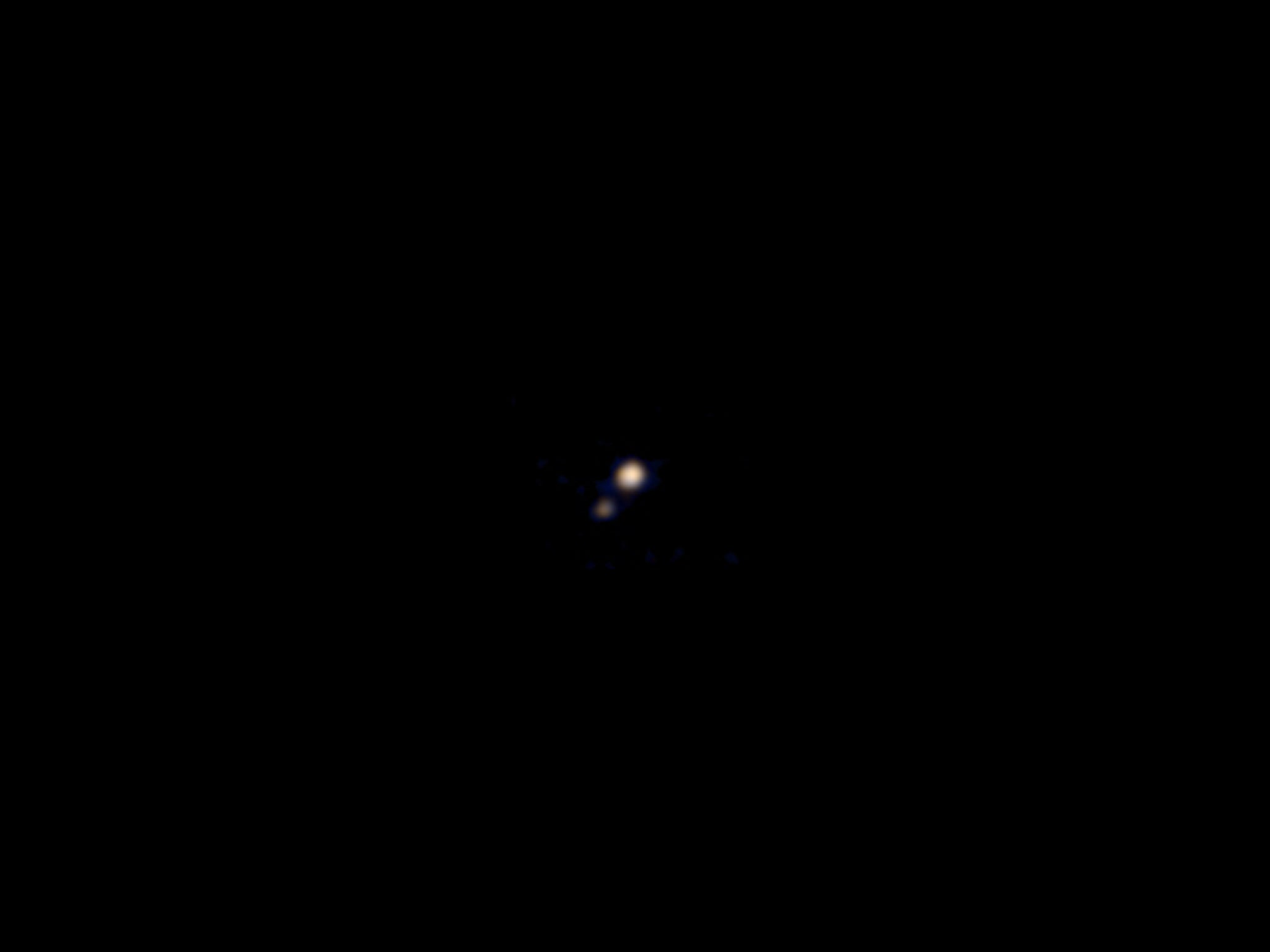Nasa gets first colour photo of Pluto, from New Horizons probe deep in space
It’s already been shamed for not really being a planet, and now Pluto has been caught in an unflattering — but hugely important — picture

Your support helps us to tell the story
From reproductive rights to climate change to Big Tech, The Independent is on the ground when the story is developing. Whether it's investigating the financials of Elon Musk's pro-Trump PAC or producing our latest documentary, 'The A Word', which shines a light on the American women fighting for reproductive rights, we know how important it is to parse out the facts from the messaging.
At such a critical moment in US history, we need reporters on the ground. Your donation allows us to keep sending journalists to speak to both sides of the story.
The Independent is trusted by Americans across the entire political spectrum. And unlike many other quality news outlets, we choose not to lock Americans out of our reporting and analysis with paywalls. We believe quality journalism should be available to everyone, paid for by those who can afford it.
Your support makes all the difference.It doesn’t look like much. But Nasa’s newly-released photo of Pluto is the first time it has been caught in colour and is likely to be one of the biggest space events of the year.
The picture has been sent back to the space agency from the New Horizons spacecraft, which will be flying past the dwarf planet in July. In the image, Pluto appears as just two small dots — and it is those tiny dots that Nasa now has to target the ship towards.
When it does go past Pluto, it will be the first time that humans have been able to see images from the dwarf planet taken up close. It will also be able to carry out scientific observations.
"Scientific literature is filled with papers on the characteristics of Pluto and its moons from ground based and Earth orbiting space observations, but we’ve never studied Pluto up close and personal,” said John Grunsfeld, astronaut, and associate administrator of the NASA Science Mission Directorate at the agency’s Headquarters in Washington. “In an unprecedented flyby this July, our knowledge of what the Pluto system is really like will expand exponentially and I have no doubt there will be exciting discoveries."
Pluto was thought of as the ninth planet in our solar system until it was reclassified as a dwarf planet and the count was reset to eight.
The New Horizons spacecraft is the fastest ever launched and has travelled longer and further than any space mission in history. It has been flying through space for more than nine years and clocked up over three billion miles while doing so.
When it arrives at Pluto it hopes to be able to study close up the dwarf planet as well as its moons, of which there are at least five. And after, it will head towards the mysterious small planets and other space rocks that lie beyond it.
The craft will study them with the seven scientific instruments that it’s carrying, which includes cameras was well as plasma and dust detectors. It will use them to map Pluto as well as therocks it’s surrounded by, study their atmosphere, as well as for looking for extra satellites that might never have been seen before.
Join our commenting forum
Join thought-provoking conversations, follow other Independent readers and see their replies
Comments